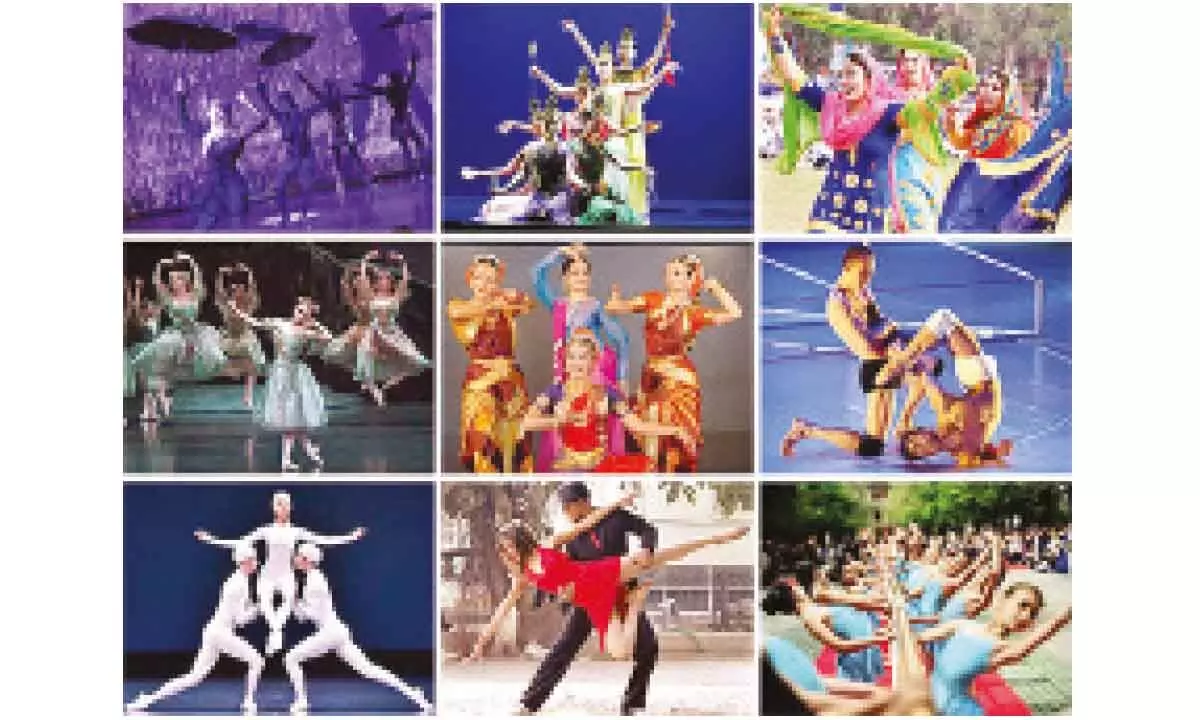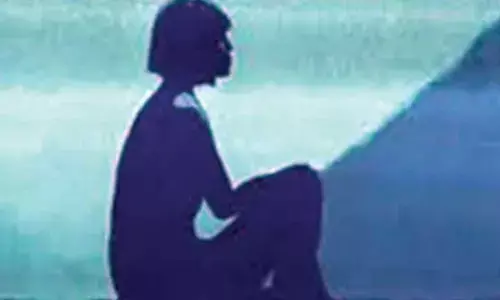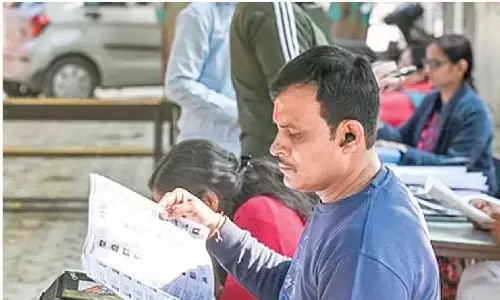Lithe or forceful, dance matters

A well-performed dance can uplift, provoke, soothe, entertain, and educate, and, therefore, is an important part of a person’s arsenal of relaxation. This was recognised even in ancient times. April 29 is celebrated as the ‘International Dance Day’ to raise awareness about the benefits of dance and to celebrate the art form
To live a life of fulfilment and dignity is something everyone wishes for. However, the factors that contribute to happiness are not easy to come by. As Thomas Edison famously said, “genius is 1% inspiration and 99% perspiration.” Application, assiduity and determination are prerequisites for success in any human endeavour. Then, again, there can be such a thing as too heavy an emphasis on serious work. The human mind and body are designed for endurance and long spells of activity. However, in the absence of avenues of relaxation, they can both get overtaxed. Recreation revitalises the mind’s inborn abilities. As the much worn out cliché goes, “all work and no play makes Jack a dull boy.”
Fortunately, there is no shortage of avenues of relaxation. People can, according to their inclination, turn to a host of activities, such as reading, enjoying the performing arts, appreciating the fine arts, and taking part in sports and games, to name just a few.
Let us turn to the field of the arts, the performing arts in particular, and among them, the dance form, as our subject for today. Gaining mastery of the traditional sixty four arts, known as the ‘Chatra Shasti Kalas’ formed an important aspect of in the development of a cultured, individual in many parts of ancient India. Originally, the five main fine arts were painting, sculpture, architecture, music and poetry. The performing arts were theatre and dance and, now, we have the movies, and the TV, in addition.
Dance, as an art form, gets back 9,000 years old in India and 5,300 years in Egypt. It also flourished in ancient Greece and China. Social, celebratory and ritual dances were essential components of early human civilisations. The Hindu religion relates closely to dance, as it also does to music.
In some early Christian communities, processions, or formal dance patterns formed part of the prayer service. While moderate Muslims generally regard music and dancing as acceptable, the more orthodox ones view sexually suggestive movement, racy lyrics, and unmarried couples dancing together as haram, because they may lead to un-Islamic behaviour.
Dance can be of many types, from simple spontaneous activity to formalised art, or from a social gathering, where everyone participates, to a theatrical event with dancers performing before an audience.
Indian classical dance, or ‘Shastriya Nritya’ is an umbrella term for various performing arts rooted in Hindu musical theatre styles traceable to the Sanskrit text of Natya Shastra. The classical forms include Bharatanatyam, Mohiniattam, Kathak, Kathakali, Kuchipudi, Manipuri and Odishi.
The movements of celestial bodies, such as the stars and the moon, and the manner in which their interactions take place, are generally called cosmic dances. The Manipuri form, for instance, is a celestial dance of Lord Shiva with his consort, Goddess Parvati.
Dance is an effective medium of visual communication, an exercise or a part of religious ceremonies. A well-performed dance can uplift, provoke, soothe, entertain, and educate, and, therefore, is an important part of a person’s arsenal of relaxation. This was recognised even in ancient times. In the Court of Lord Indra, the King of the ‘Suras’ or ‘Devathas,’ (heavenly beings in Hindu mythology) four celestial nymphs, known as ‘Apsaras,’ danced regularly. Called Rambha, Urvashi, Menaka and Tilottama, they were considered to be extremely beautiful, charming, seductive, and greatly talented, in both music and dance.
A war dance is a dance also known as: battle dance, combat dance involving mock combat, usually in reference to tribal warrior societies where such dances were performed as a ritual connected with endemic warfare. Men in Nagaland state of India perform the war dance with an outburst cry and humming tune. The Native American Rain Dance is a ceremonial dance performed by Native American dancers in order to summon spirits of the gods to cleanse the earth with rain.
In earlier days, purely as a source of entertainment, the institution of ‘nautch girls’ had an important place in the courts of emperors of the Moghul empire. While nautch girls performed for the pleasure of their audiences, ‘devadasis,’ who were dancers dedicated for life to the worship and service of a deity or a temple for life, were part of a religious tradition. Devadasis were trained experts in classical forms of dance, and enjoyed a high standing in society on account of music being an essential part of temple worship.
It is common, particularly in South India, for a disciple to spend several years under a guru, learning the intricacies of the dance form and finally reaching a stage when she can step on to the stage, and continue the tradition, of passing on the knowledge, and skills, imbibed by her, to aspiring learners. The event, known as an ‘Arangetram,’ also signifies the coming of age by the dance US, and that she cannot perform on her own in front of a live audience. Our granddaughter, Gayathri, a disciple of the distinguished danseuse and well-known guru Rajeshwari Sainath, hopes, God willing, soon to be doing her Arangetram.
Since 1982, UNESCO has, following the decision taken by the Dance Committee of the International Theatre Institute, its main partner for the performing arts, celebrated 29 April as the ‘International Dance Day,’ to mark the birthday of Jean-Georges Noverre, the creator of modern-day ballet. The objective was to raise awareness about the benefits of dance and to celebrate the art form.
Modern forms of dance in the western hemisphere include the tango, the twist, the waltz, the foxtrot and the cha cha. World famous classical dancers include Rudolf Nureyev, Sylvia Guillemot and Martha Graham. Michael Jackson, Madonna, Sammy Davis, Jr and Jennifer Lopez are among the well-known dancers of the world who popularised the lighter versions. Uday Shankar, the legendary dancer, is known as the father of modern dance in India. Rukmini Devi, Padma Subrahmanyam, Mallika Sarabhai, Radha and Raja Reddy and Vyjayanthimala are among the most well-known classical dancers of India. Birju Maharaj, Shahid Siddiqui and Gopi Krishna are also among the male classical dancers who rose to fame. On the popular side, the legendary Helen and, among men, and the amazingly athletic, and flexible, Prabhu Deva, have enthralled movie audiences for long.
A lighthearted story before we end. There was this young man who was attending dinner in a restaurant. While waiting for dinner to be served, the invited couples were using the dancing floor available there. During one dance with a young lady, as his partner the man proved to be awfully clumsy, repeatedly stomping on the partner’s foot. Out of sheer politeness, the girl said nothing, as they walked back to their tables after the dance. As the music was about to begin for the next dance, the man approached the lady, and asked whether the pleasure of the next dance with her could be his. Her crisp, and short, reply was, “entirely!”
(The writer is formerly Chief Secretary, Government of Andhra Pradesh)




















